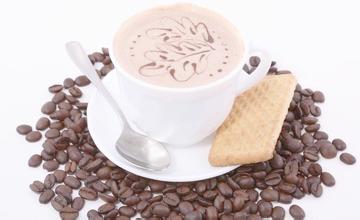Introduction to the description of the flavor of boutique coffee in El Salvador Himalayan coffee producing area
Product name: El Pacamara SHG Micro batch
El Salvador SHG Gourmet Pacamara
Grade: SHB
Manor: Ataisi Manor
Coffee variety: pacamara
Planting altitude: 1800m
Soil: volcanic soil
Treatment method: washing and fermentation, sun drying
Harvesting method: manual harvesting
Harvest year: January 2015
Flavor: Apple, nut chocolate, passion fruit sweet and sour, cream chocolate, strawberry finish, nuts, thickness and grease feel excellent
This coffee is unique and even strange, but it is excellent. Produced in the Santa Ana volcano area, the volcanic ash landscape and excellent altitude determine the excellent quality of this coffee. The nose is very dry, with intense aromas of semi-sweet chocolate and cocoa. Wet aromas with aromas of chocolate and raisins. The palate is intense and intense, with aromas of cherry brandy and raisins and chocolate on the palate, with a long, spicy finish.
Dry aroma (1-5): 4.2
Wet aroma (1-5): 4.4
Acidity (brightness) (1-10): 8.6
Taste (layered) (1-10): 9.7
Taste (alcohol thickness) (1-5): 4.2
Aftertaste (residue) (1-10): 9.6
Balance (1-5): 2
Basic score (50): 50
Total score (maximum 100): 92.7
Strength / main attributes: high strength / fruit wine, raisins, chocolate, etc.
Recommended baking degree: city+ or full city+
Contrast: a coffee that is fierce, super complex and difficult to compare with other coffees

Important Notice :
前街咖啡 FrontStreet Coffee has moved to new addredd:
FrontStreet Coffee Address: 315,Donghua East Road,GuangZhou
Tel:020 38364473
- Prev

Introduction to the characteristics of Costa Rican St. Roman Manor Coffee with light and pure flavor
Coffee was introduced into Costa Rica from Cuba in 1729. Today, its coffee industry is one of the well-organized industries in the world, with a yield of 1700 kg per hectare. Costa Rica has only 3.5 million people but 400m coffee trees, and coffee exports account for 25 per cent of the country's total exports. The volcanic soil of Costa Rica is very fertile and well drained, especially in the central part.
- Next

Soft fruit acid sun Yega Shifeiwaka Coffee Flavor description of the characteristics of roasting degree in the producing area
These mountain villages are foggy, like spring all year round, with a gentle breeze in summer, cool but not hot, rain but not damp, and no cold damage in winter, giving birth to a unique regional flavor of citrus and flowers. Coffee trees are mostly planted in farmers' backyards or mixed with other crops in their fields to talk about Ethiopia, so let's talk about the origin of coffee first. in about the sixth century, there was an Arab shepherd.
Related
- Detailed explanation of Jadeite planting Land in Panamanian Jadeite Manor introduction to the grading system of Jadeite competitive bidding, Red bid, Green bid and Rose Summer
- Story of Coffee planting in Brenka region of Costa Rica Stonehenge Manor anaerobic heavy honey treatment of flavor mouth
- What's on the barrel of Blue Mountain Coffee beans?
- Can American coffee also pull flowers? How to use hot American style to pull out a good-looking pattern?
- Can you make a cold extract with coffee beans? What is the right proportion for cold-extracted coffee formula?
- Indonesian PWN Gold Mandrine Coffee Origin Features Flavor How to Chong? Mandolin coffee is American.
- A brief introduction to the flavor characteristics of Brazilian yellow bourbon coffee beans
- What is the effect of different water quality on the flavor of cold-extracted coffee? What kind of water is best for brewing coffee?
- Why do you think of Rose Summer whenever you mention Panamanian coffee?
- Introduction to the characteristics of authentic blue mountain coffee bean producing areas? What is the CIB Coffee Authority in Jamaica?

